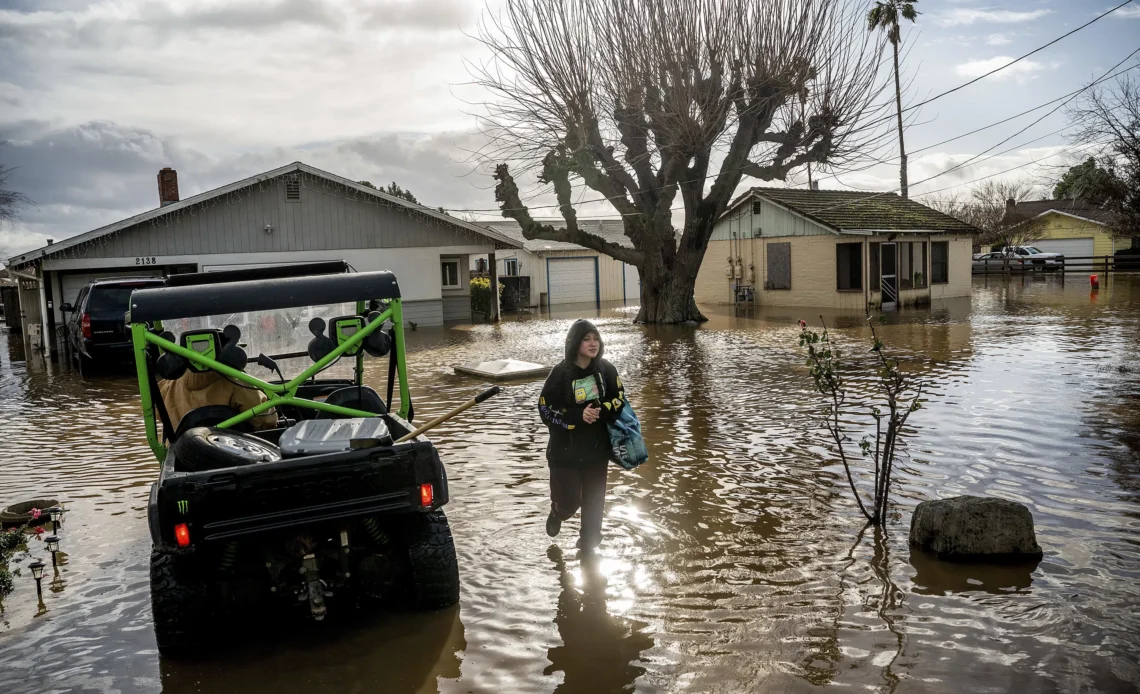ACAMPO, Calif. (AP) — On Sunday morning, Kyle Starks woke up to floodwaters that reached the door of his Jeep after yet another heavy rain storm drenched California. Emergency crews showed up with boats to float Starks and other residents of his rural mobile home park in Acampo to safety.
Beyond the physical destruction, the storm could pack a financial hit: Starks does not have flood insurance.
“I didn’t think it would flood this bad,” he explained from an evacuation center, worried that water damaged wiring and air conditioning equipment.
In California, only about 230,000 homes and other buildings have flood insurance policies, which are separate from homeowners insurance. That means only about 2% of properties are covered against flooding. The federal government is the insurer for the bulk of them – about 191,000 as of December. Private insurers issued the rest, according to the most recent state data from 2021.
In California, 32 trillion gallons of rain and snow fell since Christmas. The water washed out roads, knocked out power and created mudslides by soaking wildfire-charred hills. It caused damage in 41 of the state’s 58 counties. At least 21 people have died.
It takes targeted study to know the role of climate change in specific weather, but warmer air means storms like the ones that deluged California in recent weeks can carry more water.
Yet California’s drought has dulled people’s sense of the risk of flooding. People usually buy insurance after disasters when the risk is visceral, said Amy Bach, the executive director of insurance consumers group United Policyholders.
“People think the only people that need flood insurance are people who live right on the beach or on the banks of a river that has a history of flooding,” Bach said. In reality, far more people are threatened by rushing or rising water.
When you buy a home, a key document will be official Federal Emergency Management Agency maps that tell you if it’s in a high risk flood zone. If it is and you have a federally-backed mortgage, you are required to buy flood insurance that costs on average $950 a year. Many banks require it too.
Yet FEMA maps are limited and only take into account certain kinds of flooding — they don’t really predict flood risk. Flooding caused by heavy rains that back up storm drains is not counted, for example. The limitations mean flood risk is underestimated nationally. The maps particularly lowball the chance of disaster in California,…

